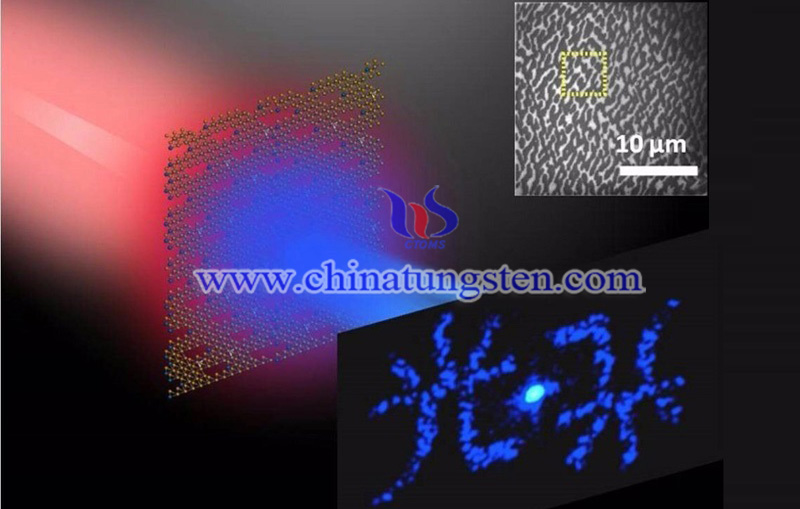Thinnest Tungsten Disulfide Optical Hologram Will Be Used in Smart Watches
- Details
- Category: Tungsten's News
- Published on Thursday, 22 August 2019 09:02
Tungsten disulfide optical hologram will be used in smart watches, with the new concept for reconstructing holographic images by using a single two-dimensional material monolayer with the thickness of less than one nanometer newly demonstrated by Missouri University of Science and Technology researchers. Their work may lead to the birth of smart watches with holographic displays, printed security cryptograms on bank notes and credit cards, and new possibilities for data storage.
Researchers described their atomically thin nonlinear optical holograms in Nano Letters, one of the top journals in nanotechnology research, and prototype their device by reconstructing several kinds of holographic images with the disulfide monolayers of the thickness of around 0.7 nanometer. A nanometer is one billionth of a meter, and the disulfide monolayer only contains one layer of tungsten atoms sandwiched between two layers of sulfur atoms.
The Nano Letters published a paper entitle "Atomically thin nonlinear transition metal dichalcogenide holograms "on August 16, describing this method. It uses only a single nanopatterned tungsten disulfide monolayer that is capable of controlling the wave front of light, where the designed hologram patterns are punctured by a nanofabrication process known as focused ion beam milling.
Using ultrafast laser to excitation on the nanopatterned tungsten disulfide monolayer film, the researchers demonstrated a nonlinear optical hologram with high conversion efficiency and atomic thickness, which can generate optical vortex beams and Airy beams, and reconstructing complex holographic images at the second harmonic frequency. The Airy beam is a waveform that is curved during motion.
In their paper, the Missouri S&T researchers reconstructed the holographic image of the Chinese character for the word "light" in blue and green colors. They believe that this new type of optical hologram holds broad applications in the future, such as security markings on banknotes and credit cards, optical communications, smart watch displays and data storage.

Dr. Xiaodong Yang, an associate professor in mechanical and aerospace engineering at Missouri University of Science and Technology, said: "We are able to control the binary amplitude modulation of zero and one by simply etching out or keeping the tungsten disulfide monolayer area. Our holograms possess significantly higher nonlinear conversion efficiency than the currently existing plasmonic super glume surface holograms made of metallic nanostructures."
Dr. Jie Gao, an associate professor of mechanical and aerospace engineering at Missouri University of Science and Technology and co-author of the paper, said: "In addition, our holograms have atomic thickness of less than one nanometer, much thinner than the usual thickness of tens of nanometers for plasmonic metasurfaces and several hundred nanometers for dielectric metasurfaces,"
Researchers realize world's thinnest tungsten disulfide optical hologram with 2-D material monolayer, this work would generate the birth of smart watches with various of functions. Hopefully, this new invention will be launched soon and used in the market.
- Tungsten Manufacturer & Supplier, Chinatungsten Online: www.chinatungsten.com
- Tungsten News & Prices of China Tungsten Industry Association: www.ctia.com.cn
- Molybdenum News & Price: news.molybdenum.com.cn
- Tel.: 86 592 5129696; Fax: 86 592 5129797; Email: sales@chinatungsten.com



 sales@chinatungsten.com
sales@chinatungsten.com